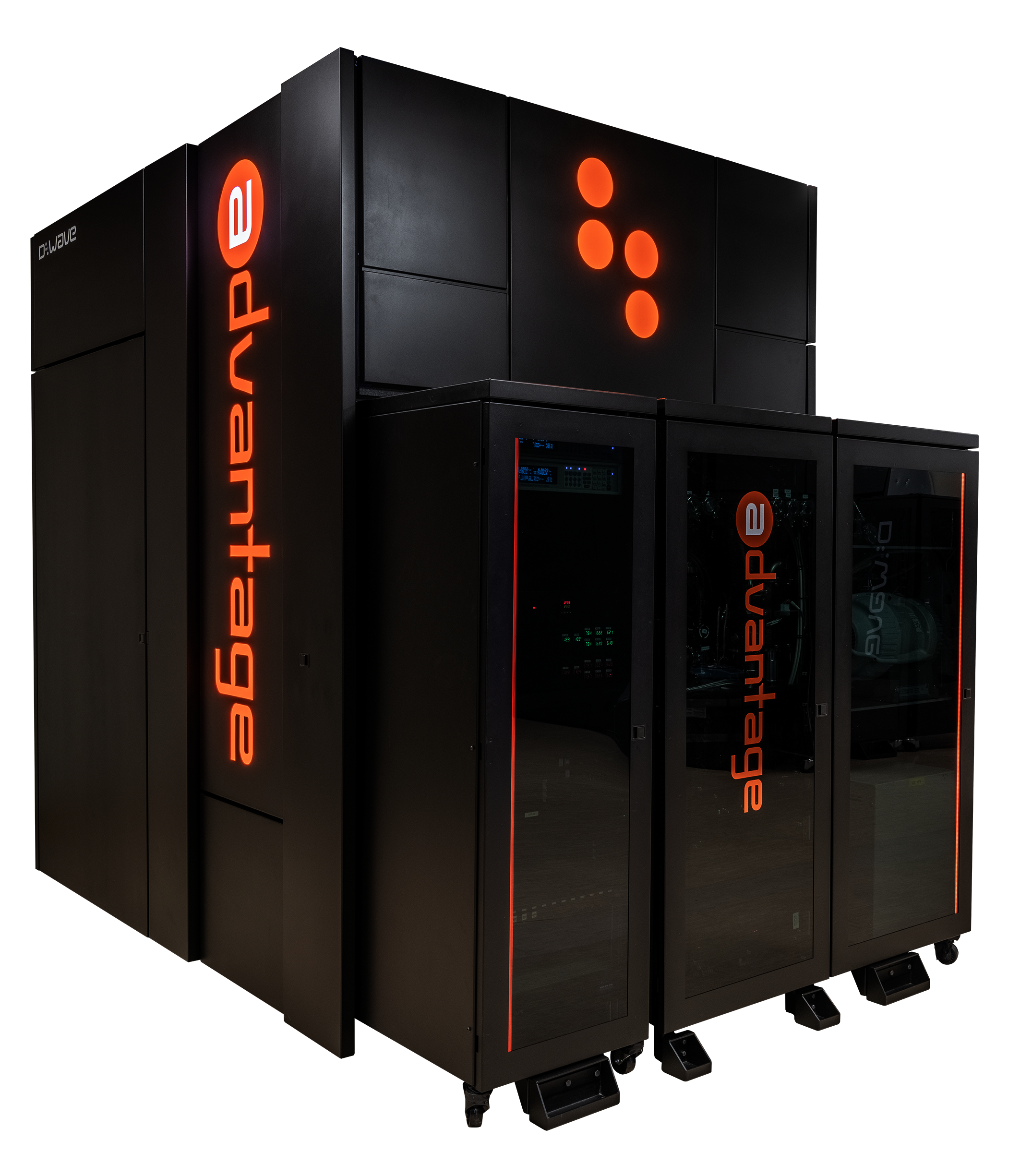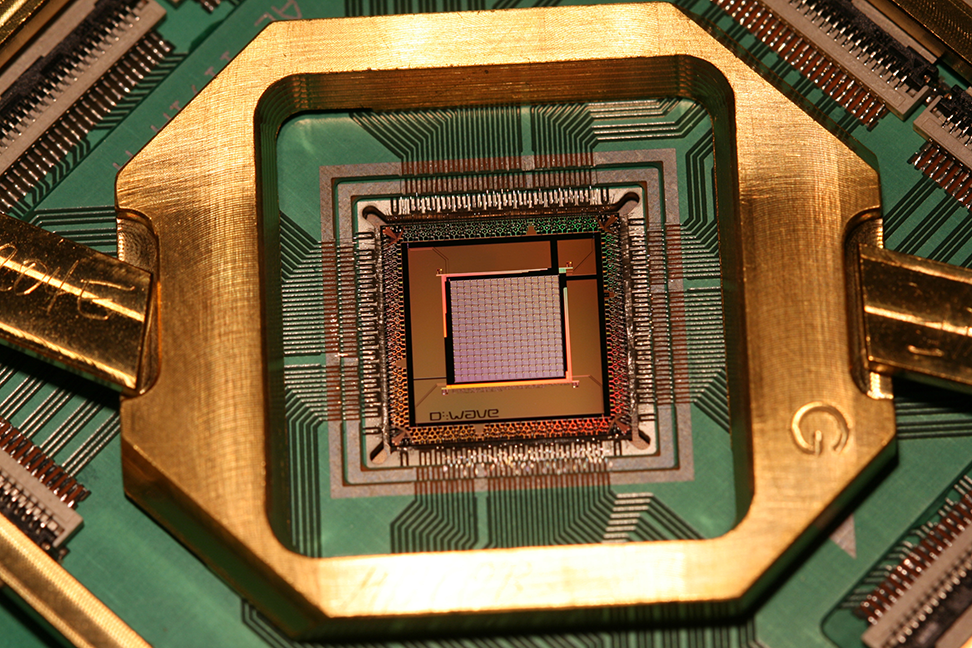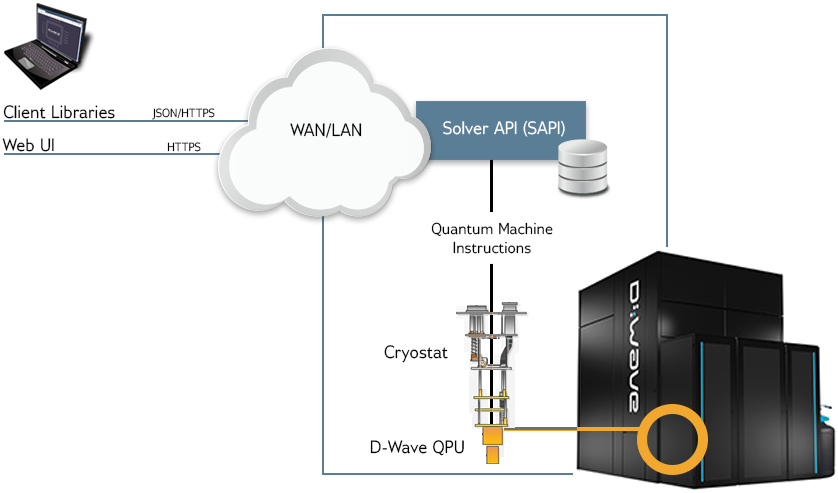Welcome to D‑Wave#
I’m not happy with all the analyses that go with just the classical theory, because Nature isn’t classical, dammit, and if you want to make a simulation of nature, you’d better make it quantum mechanical, and by golly it’s a wonderful problem, because it doesn’t look so easy.
It’s not a Turing machine, but a machine of a different kind.
—Richard Feynman, 1981
What We Do#
Despite the incredible power of today’s supercomputers, many complex computing problems cannot be addressed by conventional systems. The huge growth of data and our need to better understand everything from the universe to our own DNA leads us to seek new tools that can help provide answers. Quantum computing is the next frontier in computing, providing an entirely new approach to solving the world’s most difficult problems.
While certainly not easy, much progress has been made in the field of quantum computing since 1981, when Feynman gave his famous lecture at the California Institute of Technology. Still a relatively young field, quantum computing is complex and different approaches are being pursued around the world. Today, there are two leading candidate architectures for quantum computers: gate model (also known as circuit model) and quantum annealing.
Gate-model quantum computing implements compute algorithms with quantum gates, analogously to the use of Boolean gates in classical computers.
With quantum annealers you initialize the system in a low-energy state and gradually introduce the parameters of a problem you wish to solve. The slow change makes it likely that the system ends in a low-energy state of the problem, which corresponds to an optimal solution. This technique is explained in more detail in the What is Quantum Annealing? chapter.
Quantum annealing is implemented in D‑Wave’s generally available quantum computers, such as the Advantage™ system, as a single quantum algorithm, and this scalable approach to quantum computing has enabled us to create quantum processing units (QPUs) with more than 5000 quantum bits (qubits)—far beyond the state of the art for gate-model quantum computing.
D‑Wave has been developing various generations of our “machine of a different kind,” to use Feynman’s words, since 1999. We are the world’s first commercial quantum computer company.
D-Wave’s Quantum Computer Systems#
The D‑Wave system contains a QPU that must be kept at a temperature near absolute zero and isolated from the surrounding environment in order to behave quantum mechanically. The system achieves these requirements as follows:
Cryogenic temperatures, achieved using a closed-loop cryogenic dilution refrigerator system. The QPU operates at temperatures below 20 mK.
Shielding from electromagnetic interference, achieved using a radio frequency (RF)–shielded enclosure and a magnetic shielding subsystem.

Fig. 1 Advantage system.#
The D‑Wave QPU (Figure 2) is a lattice of tiny metal loops, each of which is a qubit or a coupler. Below temperatures of 9.2 kelvin, these loops become superconductors and exhibit quantum-mechanical effects.
The QPU in D‑Wave’s Advantage system has more than 5,000 qubits and 35,000 couplers. To reach this scale, it uses over 1,000,000 Josephson junctions, which makes the Advantage QPU by far the most complex superconducting integrated circuit ever built.
For details on the topology of the QPU, see the D‑Wave QPU Architecture: Topologies section.

Fig. 2 D‑Wave QPU.#
Note
For more details on the physical system, including specifications and essential safety information required for anyone who accesses the hardware directly, see the D-Wave Quantum Computer Operations manual, available from D‑Wave.
D‑Wave’s Software Environment#
Users interact with the D‑Wave quantum computer through a web user interface (UI), and through open-source tools that communicate with the Solver API (SAPI).[1] The SAPI components are responsible for user interaction, user authentication, and work scheduling. In turn, SAPI connects to back-end servers that send problems to and return results from QPUs and additional solvers, which are located in different geographical regions (for example, North America or Europe).[2]
See Figure 3 for a simplified view of the D‑Wave software environment.

Fig. 3 D‑Wave software environment.#
Leap Quantum Cloud Service#
The Leap service is the quantum cloud service from D‑Wave. Learn about the types of problems that the D‑Wave quantum computer can solve, run interactive demos and coding examples on the system, contribute your coding ideas, and join the growing conversation in our community of like-minded users.
For more information, see Introduction to the Leap service.
Sign up for the Leap service here: Leap service signup.
Ocean SDK#
D‑Wave’s Python-based open-source software development kit (SDK), Ocean SDK, makes application development for quantum computers rapid and efficient and facilitates collaborative projects. See Ocean SDK on GitHub to access the Ocean SDK, and Ocean software documentation for the associated documentation.